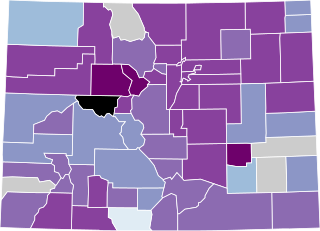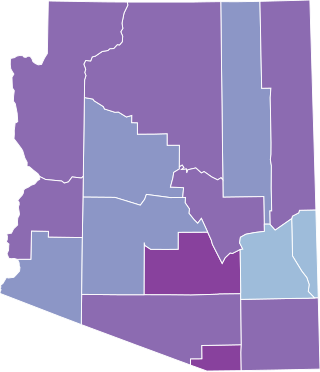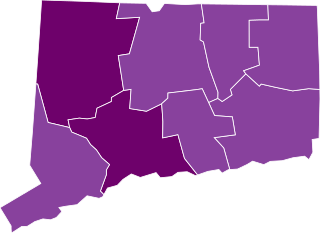Related Research Articles

Christopher Murray is an American physician, health economist, and global health researcher. He is a professor at the University of Washington in Seattle, where he is Chair of Health Metrics Science and the director of the Institute for Health Metrics and Evaluation (IHME).

The Institute for Health Metrics and Evaluation (IHME) is a research institute working in the area of global health statistics and impact evaluation at the University of Washington in Seattle. The Institute is headed by Christopher J.L. Murray, a physician and health economist, and professor at the University of Washington Department of Global Health, which is part of the School of Medicine. IHME conducts research and trains scientists, policymakers, and the public in health metrics concepts, methods, and tools. Its mission includes judging the effectiveness and efficacy of health initiatives and national health systems. IHME also trains students at the post-baccalaureate and post-graduate levels.

The COVID-19 pandemic, also known as the coronavirus pandemic, is an ongoing global pandemic of coronavirus disease 2019 (COVID-19) caused by severe acute respiratory syndrome coronavirus 2 (SARS-CoV-2). The novel virus was first identified in an outbreak in the Chinese city of Wuhan in December 2019. Attempts to contain it there failed, allowing the virus to spread to other areas of Asia and later worldwide. The World Health Organization (WHO) declared the outbreak a public health emergency of international concern on 30 January 2020, and a pandemic on 11 March 2020. As of 22 January 2023, the pandemic had caused more than 668 million cases and 6.73 million confirmed deaths, making it one of the deadliest in history.

The COVID-19 pandemic in the United States is a part of the worldwide pandemic of coronavirus disease 2019 (COVID-19) caused by severe acute respiratory syndrome coronavirus 2 (SARS-CoV-2). In the United States, it has resulted in 102,005,805 confirmed cases with 1,104,118 all-time deaths, the most of any country, and the twentieth-highest per capita worldwide. The COVID-19 pandemic ranks first on the list of disasters in the United States by death toll; it was the third-leading cause of death in the U.S. in 2020, behind heart disease and cancer. From 2019 to 2020, U.S. life expectancy dropped by 3 years for Hispanic and Latino Americans, 2.9 years for African Americans, and 1.2 years for white Americans. These effects persisted as U.S. deaths due to COVID-19 in 2021 exceeded those in 2020, and life expectancy continued to fall from 2020 to 2021.

The first cases relating to the COVID-19 pandemic in Washington, D.C., were reported on March 7, 2020. The city has enacted a variety of public health measures in an attempt to curb the spread of the virus, including limiting business activities, suspending non-essential work, and closing down schools.

The COVID-19 pandemic reached Colorado on March 5, 2020, when the state's first two cases were confirmed. Many of the early COVID-19 cases in Colorado occurred in mountain resort towns such as Crested Butte, Aspen, and Vail, apparently brought in, and sometimes taken home, by international ski tourists.

The COVID-19 pandemic was confirmed to have reached the U.S. state of Arizona in January 2020. As of June 3, 2021 Arizona public health authorities reported 322 new cases of COVID-19 and five deaths, bringing the cumulative totals since the start of the pandemic to 882,691 cases and 17,653 deaths. 12.3% of the state's population has been positively diagnosed with COVID-19 since the first case was reported on January 26, 2020.

The first confirmed case of the COVID-19 pandemic in the U.S. state of Connecticut was confirmed on March 8, although there had previously been multiple people suspected of having COVID-19, all of which eventually tested negative. As of January 19, 2022, there were 599,028 confirmed cases, 68,202 suspected cases, and 9,683 COVID-associated deaths in the state.

The COVID-19 pandemic was confirmed to have reached the U.S. state of South Carolina in March 2020. On April 2, 2020, DHEC announced that the virus had spread to all 46 counties in the state. During the month of June the seven-day moving average of new COVID-19 cases in South Carolina increased nearly five-fold, from 293 on June 1 to 1,398 on June 30, and continued to increase during July and into August. As of August 2022 the South Carolina Department of Health and Environmental Control (DHEC) has confirmed 1,605,165 cases in the state and 18,192 deaths.

The COVID-19 pandemic in Virginia is part of the ongoing COVID-19 pandemic. The first confirmed case was reported on March 7, 2020, in Fort Belvoir, and the first suspected case arrived in Virginia on February 23, 2020, which was a man who had recently traveled to Egypt. In response to the spread of COVID-19, the state mandated a stay at home order from March 18, 2020, until May 12, 2020, when the state began a four-phased reopening plan that lasted through July 1, 2020. From May 31, 2020, until May 28, 2021, the state enforced a mask mandate, being one of the first states in the nation to enforce a statewide mask mandate. The state remained relatively stagnant in COVID-19 cases through November 2020, until there was a large surge in COVID-19 cases during the winter of 2020–21, as part of a nationwide surge in cases. Cases gradually subsided to summer and fall 2020 numbers by March 2021, with numbers falling to early pandemic numbers by June 2021.

Caitlin M. Rivers is an American epidemiologist who as Senior Scholar at the Johns Hopkins Center for Health Security and assistant professor at the Johns Hopkins Bloomberg School of Public Health, specializing on improving epidemic preparedness. Rivers is currently working on the American response to the COVID-19 pandemic with a focus on the incorporation of infectious disease modeling and forecasting into public health decision making.
Crystal Watson is a senior scholar at the Johns Hopkins Center for Health Security and an assistant professor in the Department of Environmental Health and Engineering. She is an expert in health security, biodefense, and risk assessment and preparedness for emerging infectious diseases. She is currently working on the public health response to the COVID-19 pandemic.
The Western States Pact is an interstate compact between five western states in the United States to coordinate the rollback of economic restrictions implemented by the state governments in response to the COVID-19 pandemic.

This article documents the chronology of the response to the COVID-19 pandemic in May 2020, which originated in Wuhan, China in December 2019. Some developments may become known or fully understood only in retrospect. Reporting on this pandemic began in December 2019.
The Youyang Gu COVID-19 model is a computer software disease model for COVID-19 produced by independent data scientist Youyang Gu.

The federal government of the United States initially responded to the COVID-19 pandemic in the country with various declarations of emergency, some of which led to travel and entry restrictions and the formation of the White House Coronavirus Task Force. As the pandemic progressed in the U.S. and globally, the U.S. government began issuing recommendations regarding the response by state and local governments, as well as social distancing measures and workplace hazard controls. State governments play a primary role in adopting policies to address the pandemic. Following the closure of most businesses throughout a number of U.S. states, President Donald Trump announced the mobilization of the National Guard in the most affected areas.

The CDC publishes official numbers of COVID-19 cases in the United States. The CDC estimates that, between February 2020 and September 2021, only 1 in 1.3 COVID-19 deaths were attributed to COVID-19. The true COVID-19 death toll in the United States would therefore be higher than official reports, as modeled by a paper published in The Lancet Regional Health – Americas. One way to estimate COVID-19 deaths that includes unconfirmed cases is to use the excess mortality, which is the overall number of deaths that exceed what would normally be expected. From March 1, 2020, through the end of 2020, there were 522,368 excess deaths in the United States, or 22.9% more deaths than would have been expected in that time period.

Chloroquine and hydroxychloroquine are anti-malarial medications also used against some auto-immune diseases. Chloroquine, along with hydroxychloroquine, was an early experimental treatment for COVID-19. Neither drug prevents SARS-CoV-2 infection.
Software for COVID-19 pandemic mitigation takes many forms. It includes mobile apps for contact tracing and notifications about infection risks, vaccine passports, software for enabling – or improving the effectiveness of – lockdowns and social distancing, Web software for the creation of related information services, and research and development software. A common issue is that few apps interoperate, reducing their effectiveness.
References
- ↑ Ingold, John (April 7, 2020). "Three coronavirus models have very different takes on how Colorado's outbreak will develop". The Colorado Sun .
- ↑ Wan, William; Johnson, Carolyn Y. (April 8, 2020). "America's most influential coronavirus model just revised its estimates downward. But not every model agrees". The Washington Post .
- ↑ McMinn, Sean (April 7, 2020). "Coronavirus State-By-State Projections: When Will Each State Peak?". NPR.
- ↑ "Influential COVID-19 model uses flawed methods and shouldn't guide U.S. policies, critics say". Stat News. April 17, 2020. Retrieved May 1, 2020.
- ↑ Jewell, Nicholas P.; Lewnard, Joseph A.; Jewell, Britta L. (2020-04-14). "Caution Warranted: Using the Institute for Health Metrics and Evaluation Model for Predicting the Course of the COVID-19 Pandemic". Annals of Internal Medicine. 173 (3): 226–227. doi:10.7326/M20-1565. PMC 7197035 . PMID 32289150. Archived from the original on 2020-05-06. Retrieved 2020-04-28.
- ↑ "Chart: When will each state reopen? IHME projection gives dates". The Mercury News . San Jose, California. April 22, 2020.